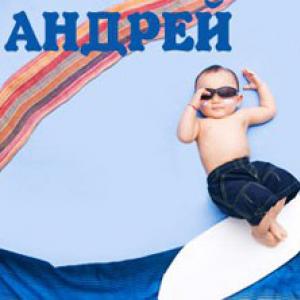All about brown algae. Brown algae fucus and kelp are elixirs of youth from the depths of the sea. meaning of brown algae
There are 250 genera and about 1500 species. The most famous representatives are kelp, cystoseira, and sargassum.
These are mainly marine plants, only 8 species are secondary freshwater forms. Brown algae common in the seas globe everywhere, reaching particular diversity and abundance in cold water bodies of subpolar and temperate latitudes, where they form large thickets in the coastal zone. In the tropical zone, the largest accumulation of brown algae is observed in the Sargasso Sea; their massive development usually occurs in winter, when the water temperature drops. Vast underwater forests are formed by kelp algae off the coast of North America.
Brown algae are usually attached to hard substrates, such as rocks, rocks, mollusk shells, and other algae thalli. In size they can reach from several centimeters to several tens of meters. The multicellular thallus is colored from olive green to dark brown, since the cells, in addition to chlorophyll, contain a significant amount of brown and yellow pigments. These plants have the most complex structure of all algae: some of them have cells grouped in one or two rows, which resemble tissues higher plants. Species can be either annual or perennial.
Thallus. Algae of this group may have thalli various shapes: creeping or vertically “hanging” threads, plates (solid or cut) or branching bushes. The thalli are attached to the solid substrate by means of rhizoids (soles). Higher brown algae of the order Laminaria and Fucus are characterized by differentiation of tissue structures and the appearance of conducting systems. Unlike algae of other groups, brown algae are characterized by the presence of multicellular hairs with a basal growth zone.
Cell structure . The cover is a thick cell wall, consisting of two or three layers, highly mucus-producing. Structural components cell wall are cellulose and pectin. Each cell of brown algae contains one nucleus and vacuoles (from one to several). Chloroplasts are small, disc-shaped, and brown in color due to the fact that in addition to chlorophyll and carotene, they contain a high concentration of brown pigments - xanthophylls, in particular fucoxanthin. Also in the cytoplasm of the cell, reserves of nutrients are deposited: the polysaccharide laminarin, polyhydric alcohol mannitol and various fats (oils).
Propagation of brown algae . Reproduction is carried out asexually and sexually, rarely vegetatively. The reproductive organs are sporangia, both unilocular and multilocular. Usually there is a gametophyte and a sporophyte, and in higher algae they alternate in strict sequence, while in lower algae there is no clear alternation.
Meaning. The importance of brown algae in nature and human life is great. They are the main source of organic matter in the coastal zone of the seas. In the thickets of these algae, which occupy vast areas, many marine inhabitants find shelter and food. In industry they are used in the production of alginic acids and their salts, to obtain feed flour and powder for the production of medicines, containing high concentrations of iodine and a number of other trace elements. In aquariums, the appearance of brown algae is associated with insufficient lighting. Some species are eaten.
Various natural dietary supplements, especially from seaweed, are currently becoming increasingly popular. In this article we will look at what brown algae is, how they are useful, what are their features, and how they are used.
general characteristics
Brown algae are multicellular spore-bearing plants that come in a huge variety of shapes and sizes. They prefer deep seas with rocky bottoms. They do not have a root system and are fixed to the surface with the help of powerful stems. They get all the nutrients they need for growth and reproduction from water.
They got their name from the brown pigment fucoxanthin., contained in chromatophores, which has the ability to outshine other color pigments - xanthophyll, chlorophyll and others.
They should not be confused with red algae (purple algae) - this is another group of plants that are close relatives of brown algae, and they have quite a lot of differences.

It should be noted that chlorella does not belong to this type of plant; it is a single-celled algae that grows in freshwater bodies.
Types and their differences
There are about 250 genera and more than one and a half thousand species of this large family, of which only eight can live in fresh water, the rest are marine inhabitants. The most famous representatives are kelp, sargassum, cystoseira, fucus.
There are three classes of these plants - Aplanosporophyceae, Phaeosporophyceae and Cyclosporophyceae. The first class includes dictyote algae, the second class includes heterogenerate and isogenerate algae, minus the dictyote algae, and the third class includes cyclosporaceae.
Classification is also carried out according to the structure of cells, their ability to group, and also according to the methods of organizing reproduction. Higher brown algae in their structure are very close to land plants, which is not surprising, because they are the progenitors of everything flora on the land.

Compound
Brown algae contain a huge amount of biologically diverse active substances– vitamins A, C, D, E, K, P, PP, group B, macro- and microelements, such as Ca, I, K, Mg, Na, Br, Cl, Se and others. The cells of these plants also contain compounds such as fucoidan, mannitol, fucosan, and algin.
The chemical composition of brown algae is similar to that of human blood. And it should also be noted that the micro- and macroelements contained in brown algae are in the form of organic compounds, which are much easier and faster absorbed by the body than synthetic multivitamin supplements.
The energy value of these representatives of the plant world is very low - on average approximately 43 kcal per 100 g, which makes them a desirable component for any diet. The BJU indicator for them is 1.7: 0.6: 8.3.

Benefits and harms
Due to the high iodine content, brown algae normalizes the activity of the thyroid gland and has a beneficial effect on the functioning of the brain.
Brown algae contains almost 70 elements periodic table, making them an indispensable source of nutrition for our cells.
Mannitol, one of the polysaccharides that make up these plants, has a pronounced choleretic effect.
Salts of alginic acid and fucoidan contained in these plants have the ability to neutralize harmful effects penetrating radiation and ultraviolet radiation, forming salts insoluble in water with heavy metal ions and radionuclides and removing them from the body naturally(diuretic effect).
There is also a strong antiviral effect from eating algae - in particular, fucoidan, contained in the cells of these wonderful plants, has the ability to prevent the transformation of normal body cells into malignant ones and is very effective in complex therapy for the treatment of hepatitis B.


This substance also has the ability to enhance regeneration at the cellular level and strengthen the immune system.
There are no direct contraindications to the use of sea brown and red algae, but if you have problems with the stomach (gastritis or ulcer), kidneys or thyroid gland, consult your doctor before consuming a food product or dietary supplement that contains brown algae. Consultation is also required in case of pregnancy, lactation or children under 12 years of age.


Application options
These sea creatures have a very specific taste, which is why quite a few people like to include them in their diet. Therefore, nowadays you can increasingly see capsules and tablets with brown algae (kelp) extract on the shelves of stores and pharmacies. Cosmetic oil is also produced in the form of an extract.
In many Asian cuisines, types of brown seaweed such as wakame, kombu, arame, hijiki, and lima are eaten. They are not only added to salads, stewed with vegetables, added to soups and other dishes as spices, but also well-known rolls and sushi are made from them.
The alginic acid found in these “natural health stores” is used as a leavening and filling agent in baked goods, cocoa powder, coffee, ice cream and more.
Dried and crushed seaweed successfully replaces salt.
And algae is also used as animal feed and natural fertilizers for the land.
Industrial use of these natural storehouses is also possible - with their help they hope to obtain a cheap and, most importantly, renewable source of fuel.


In medicine
It is also obtained from sea brown algae effective means from rheumatism, headaches and diabetes.
These beneficial plants also have the ability to:
- normalize metabolism;
- remove waste and toxins from the body;
- improve blood circulation;
- regulate blood sugar (glucose) levels;
- have a diuretic effect;
- reduce blood clotting rates and prevent thrombus formation;
- reduce the content of bad cholesterol, thereby serving as a preventative against vascular atherosclerosis;
- has a beneficial effect on the osteochondral system.


Ascophylla, one of the representatives of this large family, is used to obtain antibacterial protection for the epidermis.
Laminaria extract is also produced in the form of a food gel, which is quickly absorbed by the body and retains the largest amount of useful substances. Perhaps also not internal use this gel, but in the form of lotions, applications and compresses on rheumatic joints or places where blood vessels protrude (varicose veins).

In cosmetology
Seaweed is also actively used in cosmetology; it is added to various creams and masks for the body and face, used for the now popular body wrap, in the complex fight against cellulite, and more.
Kelp oil is also used to combat dandruff, in the case of oily and excessively brittle hair, to improve hair growth - because its extract has a beneficial effect on blood circulation in the scalp and strengthens hair follicles. To nourish your hair, you can simply rinse clean hair with seaweed infusion (brew 2 teaspoons of dry product per 1 liter of water, leave for an hour, strain and use).
Fresh seaweed wraps are practiced to get rid of cellulite and overall health and rejuvenation of the skin. And also for this purpose, a paste of crushed dried product diluted with water is rubbed into problem areas.
Omega-3 fatty acid, V large quantities contained in brown algae, are able to restore collagen in the epidermis, which, in turn, increases the tone and elasticity of our skin. To soften it, smooth out wrinkles and nourish useful substances, make a mask from a dry product diluted with water in a ratio of 1:1. If the skin is dry, add a spoonful of oil - olive or burdock. It is also possible to vary the composition of such masks by adding honey, eggs, clay and other components.
And you can also take baths with the addition of kelp and fucus oil extract.


Since ancient times, brown algae have great importance in human life, especially for residents of the sea coast. Fishermen and sailors stuffed mattresses with dried seaweed and built fires for warmth. The fish were wrapped fresh to bake in the coals, used as seasonings and simply eaten.
In the 18th century, dry seaweed was burned to produce soda ash, necessary for the production of glass and building materials.
Scientists from the University of Manchester said that algae can influence cloud formation in coastal regions.
And also in the USA there is a project for growing brown algae Macrocystis pyrifera for the purpose of methane production.
Brown algae, in addition to chlorophyll, have a brown pigment in their chromatophores - fucoxanthin, which masks other pigments. These are multicellular algae that grow at depths of 40 to 100 meters. They are the largest of all algae in size. Typical representatives are fucus, sargassum and sugar kelp, pictured below.
The structure of kelp
Sugar kelp can reach a length of up to 60 m. The body of the algae is divided into thallus (thallus), stem, and rhizoids. Outwardly it resembles a leaf on a petiole.
Water is absorbed by the entire surface of the thallus (thallus), rhizoids perform exclusively the function of attachment to the substrate. The chromatophore has a round shape and contains, in addition to chlorophyll, carotene, and xanthophyll, a brown pigment - fucoxanthin. Spare nutrient
- laminarin, deposited in the cytoplasm.
Life cycle

The life cycle is represented by the alternation of the sporophyte (2n, asexual generation) - which has the appearance of an adult kelp plant, and the gametophyte - the haploid phase (n), represented by small branched threads. As a result of meiosis, zoospores (n) are formed in zoosporangia on the sporophyte (2n). Zoospores on the soil germinate into female and male gametophytes, on which oogonia with eggs (n) and antheridia with sperm (n) are located, respectively. As a result of fertilization, a zygote (2n) is formed, from which an adult individual - a sporophyte - begins to grow. The cycle is completed.
The meaning of brown algae

Agar-agar is obtained from brown algae, a substance used in food production - for the production of sauces, ice cream, marmalade, marshmallows and in microbiology - for the purpose of producing nutrient media for microorganisms.
© Bellevich Yuri Sergeevich 2018-2020
The underwater world of the seas and oceans has always aroused interest among people. After all, it is very useful and interesting to know what types of plants and animals it is represented by? Therefore, for many decades, various scientists have been conducting thorough research in this area. A huge amount of various information has accumulated; people have learned to use almost everything for their needs. known species marine plants and animals.
One of such useful and significant representatives in the economic activity of people is brown algae. Let's talk about them in more detail.
Systematic position of brown algae
The class Brown algae occupies a fairly large part of the entire flora of the seas. Today, there are about one and a half thousand species of representatives, united in 250 genera. All of them are multicellular, and most often quite impressive in size.
The general plan of the systematic position occupied by Brown seaweeds can be presented as follows:
- Empire - Cellular.
- Overkingdom - Eukaryotes.
- Kingdom - Plants.
- Subkingdom - Algae or Lower Plants.
- Department - Ochrophyte algae.
- Class - Brown algae.
Among brown algae there are plants of both small sizes and real giants. Let's consider what features they have in the structure of the body and who belongs to them.

General plan of the building
The structure of brown algae is not much different from that of the rest of their relatives. The body is represented by a thallus or thallus, is not differentiated into parts, and has no leaves or roots. The organs of attachment to the substrate are special outgrowths resembling small tentacle roots called rhizoids.
The vast majority of species spend most of their lives attached to the substrate. However, there are also representatives freely floating on the surface. A feature of the thallus can be called well-defined large leaf plates. Sometimes they have very strong dissections, which makes the structure of brown algae look like threads. Therefore, some representatives are often called filamentous.
IN chemical composition The cells of these plants contain special pigment substances contained in chloroplasts. This:
- fucoxanthin;
- chlorophyll;
- xanthophyll.
They are designed to absorb individual spectra of solar radiation, which are capable of penetrating to great depths in the sea. Also, the pigments of these species give the corresponding brown color. It is thanks to this that these algae can live at a depth of up to 200 m, although they still prefer coastal zones and a depth of at least 15 m.
IN cell walls contains a special acid - alginic, which is one of the reasons for the production of these algae by humans. Among brown algae there are plants on which special lumps filled with air are formed. This is necessary in order to stay afloat at the surface of the water, and also so that sex cells for reproduction can freely develop inside.

The process of leaving offspring itself is of three types:
- Asexual, using spores.
- Sexual, with the participation of gametes.
- Vegetative, body parts.
Another interesting substance found in the thallus of brown algae is fucoidan. It is a polysaccharide of a complex structure that has a wide range of therapeutic effects (antitumor, anti-inflammatory, antibacterial, immunomodulatory). This is another reason why people harvest brown algae.
Places of distribution
Brown algae are species that prefer the sea. However, representatives of four genera prefer to live in fresh water bodies - Heribaudiella, Pleurocladia, Bodanella and Sphacelaria.
These plants are found everywhere in all seas of the globe, but their maximum concentration occurs in water bodies of temperate latitudes, as well as in the subpolar zones. Individual representatives form a significant part of the flora of salt marshes.
It should be noted that brown algae are giants that have chosen the Atlantic Ocean as their habitat. They formed a whole sea there, named Sargasso in their honor. This
That is climatic conditions are not so important for the life of such plants, which is why their distribution is so wide and widespread.

Representatives of the class: macrocystis
Brown algae include macrostructures, the most striking example of which is Macrocystis. These are one of the largest and most massive representatives of these plants. The length of the thallus reaches 60 m, and the mass of the crop is equal to 150 kg.
They are distributed mainly in temperate waters. The structural features include wide leaf-shaped thalli and balloons on them, which serve as a float for holding them near the surface. Rhizoids are also present on the thallus; these plants are attached to rocky and rocky substrates at a depth of about 25 m.
The composition of thallus cells includes many useful and important substances for humans, which they widely use when extracting macrocystis. What substances are these?
- Polysaccharides and amino acids - are used in the cosmetic industry to add to creams, tonics, lotions and so on.
- Iodine, silicon, phosphorus and other elements.
- - used in the chemical industry to produce artificial fibers and fabrics.
The alga itself systematically belongs to the genus Laminariaceae.

Analipus japonica
A plant that is part of the Chordarian brown algae family. Representatives of this taxon have a vertical thallus that is not too tall. Thus, Analipus reaches 30 cm in length. In this case, lateral branches extend from the main axis, but, as a rule, they do not branch further.
The rhizoids are hidden in the sole, with the help of which the plant is attached to the stones in the coastal zones of the Pacific Ocean and adjacent areas. Normal view for Sakhalin, Kamchatka, the Sea of Japan and the shores of the Kuril Islands.
The thallus of this algae is multilocular and develops throughout life. In habitats with strong surf, the algae takes the form of a plant pressed to the bottom, more like a crust.
Kelp
Also important is the brown algae kelp, a member of the genus of the same name. It consists of numerous species, the main one of which is considered to be Japanese Laminaria or This plant is widespread in the Pacific and Atlantic Oceans and is of great value to humans.
The body structure is represented by a long, up to 12 m thallus, looking like a wide brown ribbon. Rhizoids at the bottom of the thallus serve for attachment to stony and rocky substrates.
How is kelp useful for people?
- Methionine is an amino acid, the content of which makes this plant a champion even among terrestrial vegetables.
- Minerals, iodine, trace elements are present in large quantities in kelp cells.
- Carbohydrates give this plant high nutritional value.
Thanks to this composition, kelp is used as animal feed, used as a valuable product for people, and is known for its properties in cosmetology and dietetics.

Fucus
The following representatives are also very valuable medically - fucus (fucus). Their other name is that they received for the interesting structure of the thallus. It is very palmately dissected and resembles clusters of this fruit. These plants are a storehouse of all possible nutrients and important substances that brown algae generally contain. Representatives number about 19 taxa.
Externally, the thallus is short, olive-colored, quite massive and dense. Plant habitat: almost all seas and oceans, especially
Substances included and of value:
- about 42 chemical elements;
- amino acids and fatty acids;
- vitamins from group A to PP;
- fucoidan.
Sargassum
Brown algae also includes plants such as Sargassum. The thallus reaches a length of up to 10 m; its peculiarity is the ability to form air cones and bubbles at the tops. Thanks to this, plants form entire thickets at the surface of the water (in part Atlantic Ocean They attach to rocky bottom surfaces.

The main areas of application of these species are for human food (Asian countries), animal feed, and extraction of medicinal substances. Habitat: tropical zones.
Padina
Very interesting brown algae, the color of which is far from the name of the class. White mushrooms are more reminiscent of white mushrooms with their beautiful fan-shaped small thallus. This plant very thermophilic, therefore common in tropical zones and off the coast of America. Used mainly in medicine and cosmetology.
Than in any other vegetables? But this is not the most amazing thing about the incredible properties of algae.
What are edible algae and what types are there?
Algae are living organisms that inhabit sea and fresh water. Some of them are single-celled, while others closely resemble land plants, although from a biological point of view they are not. The algae belong to the genus Algae. Scientists say there are more than 30 thousand varieties of these organisms. But not all of them are considered edible.
Those that end up on our tables can be divided into 3 groups: brown, red, green.
The most famous representatives of brown algae are kelp, hijiki, fucus, limu, wakame (or chuka). Laminaria is a well-known plant. This algae is the absolute champion in the world in terms of iodine content.
Red algae are porphyry, dals, rhodemia, carrageenan. Porphyra is one of the most popular varieties of edible algae. Well, who hasn’t heard of nori - seaweed traditionally used to make sushi? And nori is porphyry algae.
Green sea plants used as food are the well-known spirulina, umi budo (also known as sea grapes), ulva (also known as sea salad), monostroma (aonori). By the way, the uniqueness of spirulina is that it contains an incredible amount - at least 3 times more than meat.
Chemical composition
Chemical composition of edible algae different types slightly different. But in general terms, the set of useful elements in the red, brown and green varieties is similar.
So, any algae can be considered as a source of, and most of the substances from. Also, these aquatic “plants” contain a lot of and, but most of all, as they said, iodine (each kilogram of algae contains within 1 g of iodine). Besides it, there are many other components. By the way, vanadium, which reduces liver levels, is a component unique to food products. In addition to algae, it is also found only in beekeeping products. It is also interesting that in terms of the set of minerals, seaweed is very similar to the chemical composition of human blood.
In addition, these organisms are rich in phenolic compounds, plant compounds, as well as lignins, and other biologically valuable components.
Porphyra (nori)
 Porphyra is a very common algae. Lives in different seas, including the Black, Baltic, Mediterranean, and White. This representative of red aquatic “plants” is useful for preventing atherosclerosis and lowering cholesterol levels. These properties of nori make them useful for people with disorders of the cardiovascular system. In addition, nori is known as a source of vitamins A, D and. Traditionally used in Japanese, Korean and Chinese cuisines.
Porphyra is a very common algae. Lives in different seas, including the Black, Baltic, Mediterranean, and White. This representative of red aquatic “plants” is useful for preventing atherosclerosis and lowering cholesterol levels. These properties of nori make them useful for people with disorders of the cardiovascular system. In addition, nori is known as a source of vitamins A, D and. Traditionally used in Japanese, Korean and Chinese cuisines.
Lithothamnia
The extremely rich mineral and vitamin composition is the first thing that comes to mind when it comes to red coral algae lithothamnia. Researchers have counted more than 30 minerals in this product, including incredibly high portions of magnesium and iron. Thanks to this, lithothamnia is considered one of the most useful products for the prevention and treatment of anemia.
Anfeltsia
This red inhabitant of the Black Sea, as well as external seas Far East and Severa resembles small spherical bushes. It usually grows near the coast at a depth not exceeding 5 m. It is Ahnfeltia that is the basis for the production of a natural thickener known as agar-agar. This substance is used in marmalade, marshmallows and some other products.
In medicine, ahnfeltia is known as a natural medicine against breast cancer. But overuse of the product can cause severe diarrhea.
Phyllophora ribbed
This is a red algae from the Black Sea, common where rivers flow into the sea. For many years it served as a source of iodine. It is actively used in the beauty industry as a product that effectively slows down aging.
Benefits for weight loss
In some types of algae, researchers have found an enzyme also contained in - the same one that causes splitting. On the other hand, sea “plants” are also useful in that when consumed with big amount, you can get rid of the feeling of hunger for a long time. This happens because algae, absorbing liquid, swell and create a feeling of fullness in the stomach. And all this against the backdrop of a low calorie content, but a rich mineral and vitamin composition.
 To speed up the breakdown of fats, it is useful to drink tea brewed from a collection of herbs and seaweed. To do this, take equal proportions of corn silk, dandelion, buckthorn, cystoseira bearda, bearberry, fireweed, licorice, alfalfa and algae (preferably kelp and fucus). Take 2 tablespoons of the mixture per liter of boiling water and leave for at least an hour. You need to drink tea 5 times a day, 100-150 ml. The course of treatment should not last more than 2 months. After a 30-day break, repeat.
To speed up the breakdown of fats, it is useful to drink tea brewed from a collection of herbs and seaweed. To do this, take equal proportions of corn silk, dandelion, buckthorn, cystoseira bearda, bearberry, fireweed, licorice, alfalfa and algae (preferably kelp and fucus). Take 2 tablespoons of the mixture per liter of boiling water and leave for at least an hour. You need to drink tea 5 times a day, 100-150 ml. The course of treatment should not last more than 2 months. After a 30-day break, repeat.
Possible dangers from use
Potential harm from algae is possible if you are allergic to it. In addition, kelp, for example, is contraindicated for people with kidney disease, stomach ulcers, gastritis and patients with tuberculosis. People with an overactive thyroid gland can only consume sea “plants” with the permission of a doctor.
Areas of application
Algae is one of those products that people use in a variety of areas. The most obvious use is as food. In addition, in the food industry, kelp and fucus are raw materials for algin (E400), which is used in the confectionery industry as a thickener and stabilizer. E400 can usually be seen in some candies, ice cream, yogurts and even. Another representative of the E-components, obtained from red algae, is E406, also known as an agar-agar thickener.
How to cook properly
It is best to eat fresh or dried seaweed. They can be prepared in several ways: after soaking, adding to ready-made dishes, steaming or grinding the dry product, mixing with spices and adding to food in this form.
Today, algae is an affordable product in supermarkets. Moreover, presented in the most different forms: frozen, salted, pickled, dried, dried, in the form of ready-made salads. When purchasing dried seaweed, it is important to carefully check the tightness of the packaging. And here white coating on the product should not be scary - this is a sign of correctly prepared “plants”. Dry before use seaweed pour water for a while, then add to salads, broths, snacks, rolls.
Residents of Asian countries were the first to include algae in their diet. This product takes pride of place in oriental cuisine. But sushi is far from the only dish in which sea “plants” look organic. This exotic goes well with mushrooms and beets; seaweed can be stewed in oil, and it also makes a good appetizer for strong alcohol.
Use in cosmetology
In beauty salons, procedures using algae are one of the most popular, but also expensive, pleasures. And all because they are effective. One of the most popular procedures is anti-cellulite wraps using seaweed. The extract of this product is also added to creams and serums, including those for sensitive or problem skin. Algae is used for baths, hair products and face masks.
Bioactive substances contained in algae:
- normalize metabolic processes;
- rejuvenate aging skin;
- restore skin structure;
- promote the production of collagen and elastin;
- make the skin elastic;
- moisturize skin and hair;
- restore healthy complexion;
- eliminate stretch marks.
These beneficial features aquatic “plants” are actively used in the beauty industry around the world.
Researchers say algae have inhabited our planet for more than 2 billion years. For several centuries, people have been eating them (although until recently they had no idea what unique properties these organisms have). The benefits of algae seem to be impossible to overestimate. Nature has endowed these amazing inhabitants of reservoirs with incredible properties. And, undoubtedly, those who call algae a super food are right. But still, we should not forget that excessive enthusiasm even for such useful product can sometimes be dangerous.







